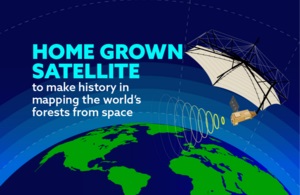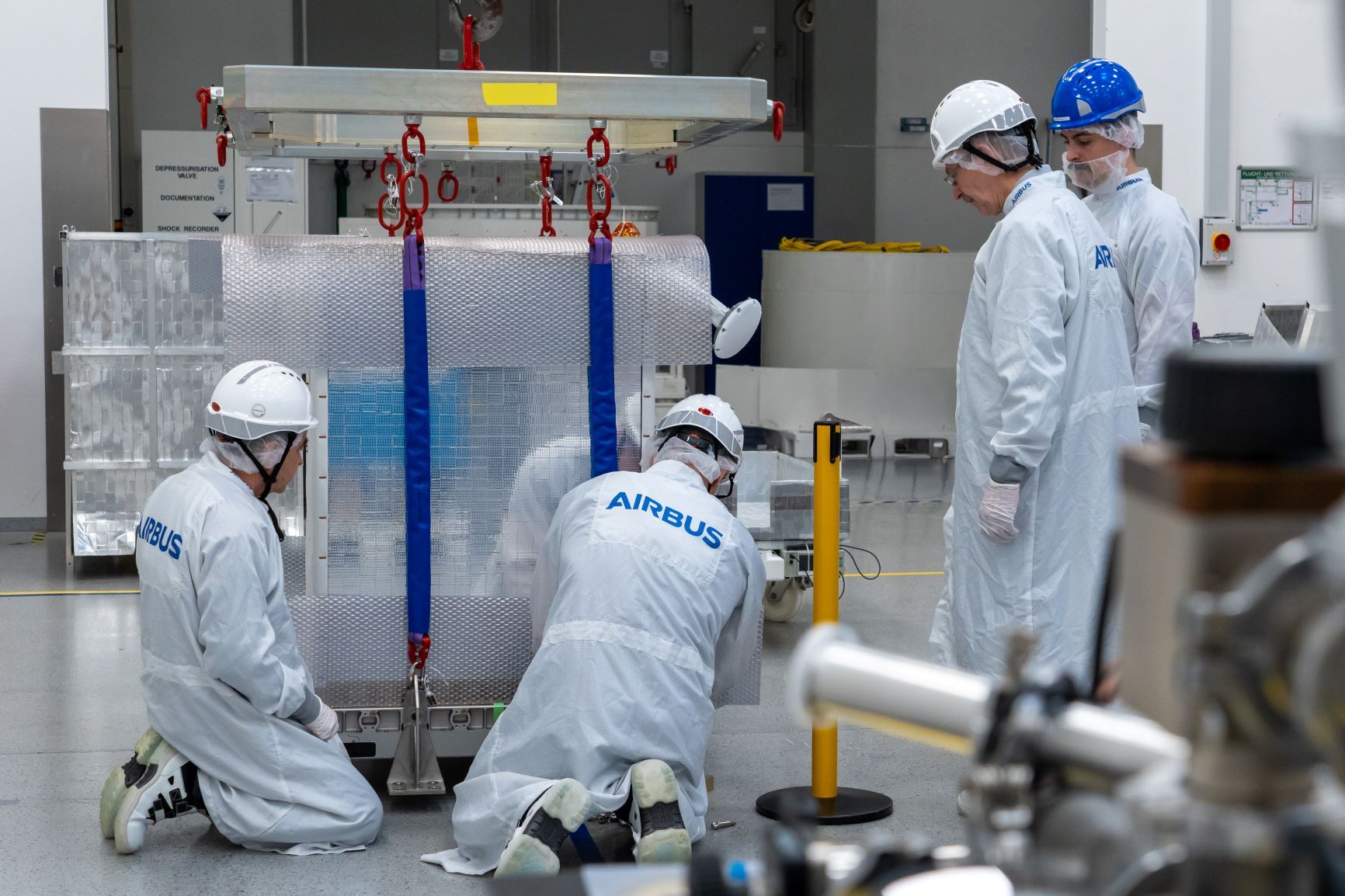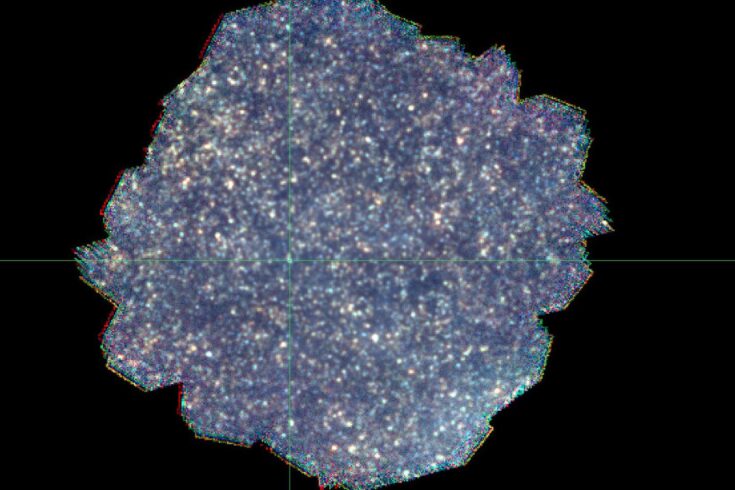Airbus-built SES-12 dual-mission satellite successfully launched

Above:
Artist view SES-12.
Copyright Airbus
Following separation from the launcher, the most powerful all-electric satellite ever has completed its initialisation phase and has started its electric orbit raising (EOR) operations as planned.
SES-12 is the third all-electric satellite built by Airbus in orbit. Its communications payload incorporates state-of-the-art solutions, in particular multi-beam antennas linked to a digital signal processor, which enable a multitude of basic spectral channels to be allocated to various beams in a completely flexible manner.

Above:
SES-12 container.
Copyright Airbus / D.Marques
“Airbus salutes SES’ ambitions regarding innovation and responsiveness in a rapidly changing market and we acknowledge their strong support for all-electric satellite technology”, said Nicolas Chamussy, Head of Space Systems. “We have been using electric propulsion for station-keeping for more than a decade and have now in orbit three Eurostar E3000 satellites equipped with the EOR technology. The Airbus team has now started SES-12 Electric Orbit Raising (EOR) operations.”
The mass saving by using all-electric EOR technology enables SES-12 to combine two high-capacity missions, equivalent to two conventional payloads, in one spacecraft. To fulfil its dual mission, SES-12 features both wide beams and high throughput spot beams to serve diverse connectivity needs. The satellite will provide expansion and replacement capacity to serve the fixed data, mobility, government and video sectors in the Middle East and Asia-Pacific regions.
SES-12 will operate in the Ku and Ka-bands with a total of 76 active transponders and eight antennas. Weighing 5,400 kg at launch it has an electrical power of 19 kW and will operate in geostationary orbit at the 95° East location for a planned service period of more than 15 years.













